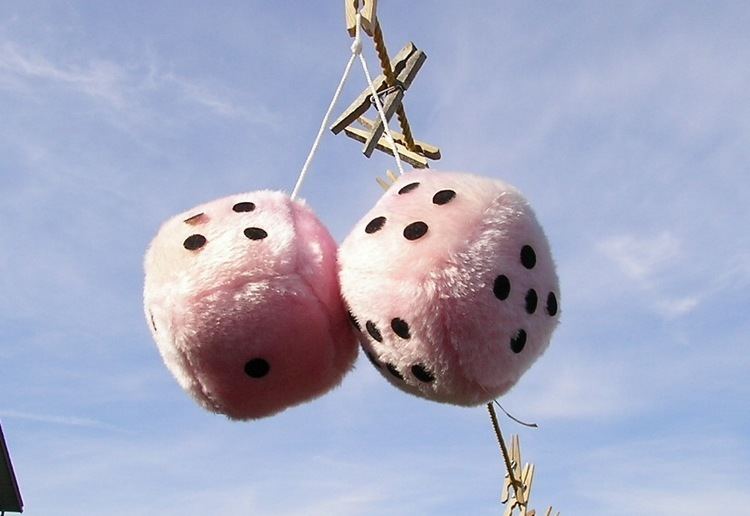 | ||
Fuzzy dice, also known as fluffy dice, are an automotive decoration consisting of two oversized (usually six-sided) plush dice which hang from the rear-view mirror. The original fuzzy dice, first used in the 1950s, were white and approximately 3" across. Nowadays, fuzzy dice come in many colors (including fluorescents, with bright pink or blue being popular) and are available in many sizes. In Britain and other parts of the world it is considered kitsch to display such items in a car.
Origin and history
The use of fuzzy dice is believed to be traced back to American fighter pilots during World War II. Pilots would hang the dice above their instruments displaying seven pips before a 'sortie' mission for good luck. It is also speculated that the dice represented a high degree of risk associated with the fighter sorties; hundreds of pilots were shot down each week. Upon returning after the war, many airmen continued the tradition.
In the 1950s, the fuzzy dice became one of the first items sold specifically to be hung from a rear-view mirror. Ed Sundberg and Lupe Zavala claim to have started the trend in 1959 at Deccofelt Corp in Glendora, CA. Their dice were made of polyurethane squares with felt dots. When dice were produced in other countries, designers adopted a "fuzzy" plush material.
It has been postulated that the late Mark Shepherd Jr., a former CEO of Texas Instruments, created the first fuzzy dice in 1952, when he was a project engineer working for the company. He supposedly made them as a "good luck" gag gift for a professional acquaintance, knowing the original use of the dice.
A 1993 study showed there to be no correlation between the use of fuzzy dice and the degree of a driver's reckless driving behavior.
